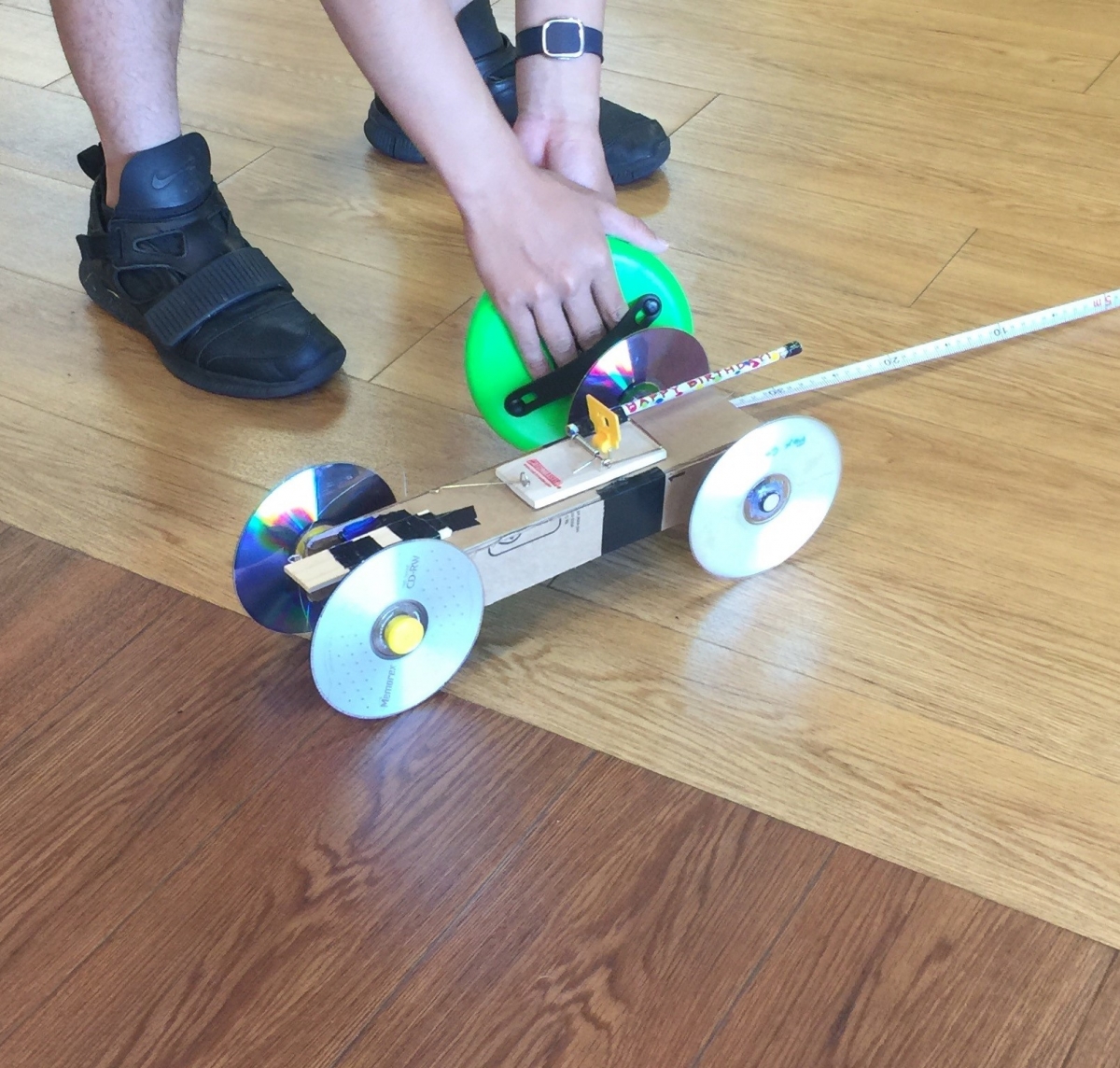Mousetrap Car Project
 Juniors in Mrs. Stroube’s physics class put their classroom learning into practice by building a mousetrap car. Students have been learning about energy transfer, gathering data, calculating velocity and acceleration, and other concepts like friction and movement in a circular path.
Juniors in Mrs. Stroube’s physics class put their classroom learning into practice by building a mousetrap car. Students have been learning about energy transfer, gathering data, calculating velocity and acceleration, and other concepts like friction and movement in a circular path.
For their capstone project, they were challenged to build and test a car using a mouse trap as the only source of propulsion. Each student is given a tradition mouse trap and have to figure how to convert the “elastic energy” in the spring to “kinetic energy” (motion). The car had to have wheels, axles, and other materials from around their house or purchased from a hardware store or hobby shop. The mousetrap could be attached to other material to make the car - wood, Legos, modified car toys, etc.
Students went through a testing phase prior to the competition. They were required to use appropriate lab procedures and trials to determine average acceleration, maximum velocity, and weight/distance ratio. After testing, they had to make at least one improvement to their car, document it, and re-test to determine the new results. All of this information was included in their formal report for the project.
Students raced their creations in the Traylor Atrium on Friday, May 6. The “winning” car is the one that has the best distance to weight ratio. This year, Ben Jordon and Kathryn Heil-Rawlings traveled 7.5 meters and weighed 117 grams, beating out Jacob Bambenek and Tess Smith’s car which went over 25 meters, but weighed 400 grams.
This project is one of many examples of how Evansville Day School uses hands-on experiences to prepare our students for life beyond the classroom. The mousetrap car project develops resilient, balanced, entrepreneurial learners through creativity, curiosity, problem solving, and more. Plus, the students had a lot of fun doing it!